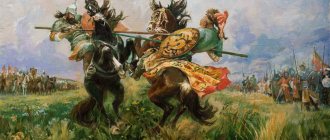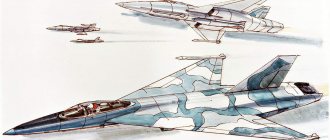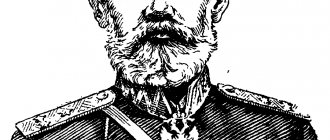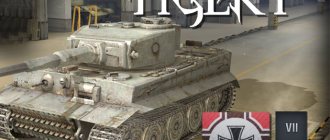Sovnya Sovnya or owl is a type of Slavic polearm. Many people mistakenly attribute it to the Rogatins, however, this is an incorrect statement. The curved shape of the blade-tip of the owl is such that it allows you to deliver blows of all types, i.e. piercing, chopping and cutting. In this regard, the owl is classified as a type of glaive or halberd. This is not a glaive, as such, but one of the varieties of long-pole bladed weapons for close combat.
Spear evolution part 2
Continuation of the review of the oldest cold piercing weapons in the history of mankind.
Very soon people realized that the spear contained considerable development potential. The spear was noted on almost every page of the chronicles. Today, many varieties of copies are known. Let's try to consider the most famous of them. This version of the weapon is perhaps closest to the “original” purpose of the spear. The tip of the pike was mounted on a long shaft and could be either flat or faceted. The latest modification was called “armor-piercing” and was designed to penetrate armor. Which, in fact, it did successfully, since the faceted tip was much stiffer than the flat one and successfully withstood a collision with the iron of armor or chain mail. The pike “worked” equally well on Tatar kuyaks and on the solid breastplates of European warriors.
The entry of sharpened metal into the chest caused, at a minimum, pneumothorax, which the healers of that time did not know how to treat. Particularly advanced warriors made the blade (this name seems to be true for a piece of metal, the side edges of which were sharply sharpened) serrated. When trying to remove the spear from the enemy’s body, the teeth caused additional damage.
In short, in the hands of an experienced fighter this weapon was very dangerous. But human thought, as was rightly said before us, does not stand still. Especially in the field of creating means of killing their own kind. Human rumor has preserved legends about those who, having received a pike in the chest or stomach, pulled themselves up along the shaft and “explained” to the enemy how wrong he was. Perhaps in those days people were stronger and painful shock was just an annoying nuisance for them. However, the tip of the spear soon received a limiter and the weapon began to be called
Rohatina
Its tip lengthened and became like a sword blade. In some encyclopedias, the classic version is called an analogue of the Roman gladius, which has lost its handle, but received a wide crosshair. It is not known for certain how widely such a device was used in military operations, but such weapons were very popular among large game hunters. Scenes of bear hunting with a spear can be found in G. Sienkiewicz’s “Crusaders” and in chronicles. Hunting with a spear was considered a “lordly” pastime and, indeed, people of the noble class, including rulers, did not disdain it.
The most famous spear belonged to the Tver prince Boris Alexandrovich. The date of its manufacture is considered to be 1450. The weapon is richly decorated with gold inlay, so it is difficult to imagine that it was intensively used for its intended purpose.
Fans of exotic hunting still use the spear to this day - but only under the supervision of experienced huntsmen. The responsibilities of the latter include not only providing insurance for the hunter, but also protecting animals whose population is under threat. So you are unlikely to be able to bring back two or three bear carcasses from a hunt.
Analogs of the hunting spear were also used in war. They were quite successfully used by infantrymen against combat cavalry. Of course, once it entered service with the regular army, the slingshot underwent some changes. Firstly, the weight of the weapon has decreased. If the spear as a whole (tip plus shaft) could weigh up to five kilos, then the army version was much lighter. The crosspiece has turned into two additional points, due to which the runka (the so-called fighting spear) is sometimes classified as a variation of the fighting pitchfork.
The tactics of using this weapon have hardly changed compared to hunting techniques. The shaft rested on the ground, and the tip pointed towards the enemy. But if, as a rule, a few slingshots were used during hunting, then in war they were formed into a light fortification that did a good job of withstanding the onslaught of horsemen. But apparently, the spear was such a successful invention that its evolution continued. And it appeared...
Cold weapons: manufacturing features and legal aspects
To realistically simulate firing with blank cartridges, a cold weapon is used. The scope of its application is not limited to self-defense - such guns can often be seen in films or on the theater stage, they are bought for private collections.
Externally, the SHP weapon is practically no different from the real thing.
It should be understood that it will not be possible to shoot live ammunition from such a weapon without serious modification of its mechanism, and independent manipulations in order to make a full-fledged firearm are criminally punishable.
What is a cold weapon?
The drained weapons are combat models that have already been written off due to their condition. Sometimes defective traumatic weapons are also cooled. They are first decontaminated, making it impossible to fire live ammunition. All changes must be reflected in the documentation.
According to regulatory documents, any citizen of the Russian Federation who has reached the age of majority can legally buy cold weapons, since such models are not classified as firearms. To purchase cartridges, similarly, no license is required, with the exception of cartridges for long-barreled models (cartridges for the Mosin rifle, machine gun and carbine).
When purchasing one of the listed long-barreled models, the starter kit also includes ammunition. But only those who have permission to store hunting rifles of the appropriate caliber will be able to purchase them.
There are two types of cold weapons:
- Layouts that are not suitable for even a blank shot.
- Firing blank charges.
Sometimes pneumatic weapons with a muzzle energy of no more than 3 J and starting pistols with a caliber of no more than 6 mm are also included in the category of cooled weapons.
How are such weapons made?
The most common version of a cold weapon for filming in films is the Tokarev pistol
Most often, weapons are cooled down by converting combat units into civilian ones. As a rule, the procedure is carried out in several stages:
- Fixing the barrel (it becomes motionless).
- Replacing the chamber for blank bullets.
- Installation of special pins into the bolt.
- Pressing a special bushing into the barrel and welding it.
It should be taken into account that in the domestic market the majority of models are handicraft.
The products of the Hammer Arms company stand out - the models of their production are as close as possible to combat samples.
Users especially highlight two models of cold weapons:
- Pistol “TT”. A shot from a cold TT will be just as loud and effective as from a combat counterpart; It is produced by light and sound charges. This model is often used in cinema.
- Rifle SO-AVT-40. To convert it, a sample is installed on the bolt, and a pin is installed in the barrel. At the same time, the external resemblance to the combat model is completely preserved.
Do I need permission to purchase and store?
As a rule, those who are concerned about their own safety think about purchasing a cold weapon. By law, such models are considered decommissioned. Accordingly, a license to purchase them is not required.
Parts of cooled pistols and shotguns are not considered separate elements of a firearm, and therefore they can also be purchased without a license, like SHP cartridges.
Regulatory documents consider cold weapons only as attributes in the sphere of culture and education.
It is believed that pistols and shotguns of this format can very easily be converted and returned to their combat functions. And users often “grasp” this idea, since the work of the master and the final cost will be less when compared with the cost of a firearm. This position is initially wrong, and the consequences of such a decision can be very negative.
It should be understood that the process of deactivating a factory model does not provide for its subsequent transformation. Altering a cooled weapon in a makeshift manner can lead to malfunction of the pistol or make it dangerous for the owner. If law enforcement officers find such a gun, then the desire to save money will lead to several years in prison.
Adviсe
Let's look at a few important nuances that should be considered before purchasing such a weapon.
What do you need to purchase?
In order for the purchase of a cold weapon to be legal, you need to have properly executed documents for it.
To purchase a high-quality and safe cooled pistol, you should study this topic no less carefully than when purchasing military weapons.
It is important to understand that the presence of certain documents will guarantee the absence of claims from law enforcement agencies. Therefore, it is recommended to buy agricultural products at specialized sales points, and not from handicraftsmen.
When purchasing a pistol, you should pay attention to the following nuances:
- the model must have a passport and be marked;
- methods for deactivating the product must be described in the passport;
- write-off data must be indicated on the case.
Is this weapon suitable for self-defense?
Purchasing a cold weapon for self-defense is a very good decision. In particular, the “TT” model is excellent for these purposes. But such a pistol also requires a certain skill in handling it. And the best thing to do would be to seek advice from an instructor who will conduct several training sessions at the shooting range.
Conducting classes in a specially designated place is a necessary measure, since the volume of a shot from a cold TT is not inferior to a combat one. Accordingly, its use in crowded places may provoke excessive attention from law enforcement officers.
What are the features of carrying and storing cold weapons?
It is prohibited to use cold weapons for personal gain and pass them off as military weapons.
There are no special rules for storing cold weapons. The most important thing is to find a place for the gun in the house where children do not have access. No special permits will be required to transport agricultural products.
When traveling abroad, you will need to provide a certificate of conformity for such weapons.
But there are several aspects to carrying cold pistols:
- The product must be worn in a holster or a special case.
- Do not display your gun in public unless absolutely necessary.
It is better to always have with you:
- passport of the plant that performed the cooling;
- certificate of conformity or a copy thereof certified by a notary.
Source: https://voin.guru/oruzhie/ognestrelnoe/oholoschennoe-oruzhie/
Sovnya
Imagine a curved blade on a very long handle - and you will get an idea of this weapon. The owl could deliver not only piercing, but also slashing blows. The latter, presumably, were rarely used, and this was justified for two reasons. Firstly, in a close formation you couldn’t swing such a thing without the risk of hitting your own people, and secondly, the owl had significant inertia, which made it difficult to handle.
However, one skilled warrior with an owl, finding himself surrounded by enemy swordsmen or even spearmen, could relatively easily maintain a zone around him “free from passersby.” Only an archer or a crossbowman could defeat him.
A glaive can be considered similar to an owl. This weapon is structurally very similar to the owl, but is much more famous. The glaive was especially popular during the Venetian Republic. The guards of the local doges were armed with these weapons, but reliable information about their combat use has not survived to this day - unlike samples of the weapons themselves, which were decorated with gilding and etched patterns. Therefore, many fans of polearms believe that glaives were only ceremonial weapons, designed to emphasize the position of the doge in society. In general, something like the hatchets made of pure silver, which were armed with the guards of John IV, known in history as the Terrible. But the development of the spear did not stop there. Its further evolution led to the emergence of such an object as
What was a glaive and where did the name come from?
A glaive is an ordinary sword sharpened on one side (such as a wide, 5-7 cm falchion) from 40 to 60 centimeters long with a spike extending from the butt.
The sword was mounted on a handle no more than one and a half meters long. A pointed tip was placed on the other end of the shaft. Sometimes, instead of a tip, a ball was made for counterweight. The double-bladed glaive was used so rarely that almost nothing is known about it. Historians strongly doubt their real existence.
The spike could run either parallel to the main blade or move away at an angle.
They tried to protect the shaft from being cut by wrapping it with a metal ribbon or decorating it with rivets.
Glaives had a wide variety of tip shapes. It was also possible to make them with additional blades. In total, about a hundred modifications are known. The east had its own characteristics.
The Japanese naginata and the Chinese guan dao were not glaives. They just look like her. Kuza and sovnya are also very similar to the glaive. The first did not have a spike and was smaller in size, while the second was distinguished by a single-edged tip.
During the time glaives were used, they remained quite rare weapons. The manufacture of a glaive required the use of high quality steel, and this greatly increased the cost of the final product and was not affordable for everyone.
For example, low-grade iron was allowed to be used for berdysh, and their production in Rus' was put on stream.
Therefore, only well-trained warriors were armed with glaives as part of the so-called knightly spear.
There are different points of view regarding the name. Most philologists consider the word glaive (glefia) to be a French derivative of the Latin gladius (sword). Other researchers rightly point to earlier references (before the 14th century), where a glaive in both French and English refers to a spear.
Fictional weapons, such as the Ephene glaive, which have appeared in our time thanks to cinema and computer games, have nothing to do with real weapons.
Halberd, or "long knife of the Vatican"
That’s exactly what the Saracens called the “long knife of the Vatican,” according to the testimonies of participants in the crusades (and they are preserved in the library of the papal state to this day), a hybrid of a spear and a battle axe.
And here we step on the thin ice of contradiction. Fans of bladed weapons cannot agree on whether to consider a halberd a spear or an ax on a long shaft. However, this is probably the fate of any successfully designed weapon. Take, for example, a Kalashnikov assault rifle: should we consider it a submachine gun or an assault rifle? There are no, no, disputes about this, and they do arise among gunsmiths. Same with the halberd. But if the spear is currently used only by rare lovers of tickling their nerves while hunting, then the halberd is in service to this day.
Of course, “long knives” in the hands of the Vatican army - the Swiss Guards - now look like a kind of anachronism, but tradition is tradition. And it seems that if such a need arises, the halberdiers in blue and gold uniforms will cause no less a stir than their ancestors, who once went to liberate the Holy Sepulcher from the hands of infidels.
Structurally, a halberd is an ax with a tip (rarely two or more), allowing it to be used as a spear. A characteristic feature of halberds is the presence of a hook, which was convenient for pulling the rider off the horse. Judging by the images of some types of halberds (for example, Italian), it was the hook and the sharp tip that were the main combat parts of the halberd.
The chopping part was often purely symbolic, which makes it possible with a high degree of confidence to attribute the halberd to spears, and not to battle axes. However, the same participants in the crusades demolished many Saracen heads with halberds with crescent-shaped blades. It was almost impossible to dodge a blow from such an ax precisely because of its shape. Wherever the enemy moved, right or left, sharpened steel awaited him everywhere.
Should the halberd be considered the pinnacle of the evolution of piercing weapons or should it still be classified as a slashing weapon? Probably, everyone should choose the answer to this question according to their own taste.
Weapons for Russian citizens: what is possible and what is not
The Russian government approved changes to the “Rules for the circulation of civilian and service weapons and ammunition on the territory of the Russian Federation,” allowing citizens who have the necessary documents to carry weapons for self-defense. The corresponding resolution dated November 8, 2014 was published on the official legal information portal.
In the previous edition, the clause on the carrying of weapons by Russians with appropriate permits provided for the ability to carry them only during hunting, sporting events, training and shooting exercises. All these points are preserved in the new edition of the rules and are supplemented with the words “and also for the purposes of self-defense.”
The Ministry of Internal Affairs has already officially clarified that the changes made do not essentially change anything, are of a clarifying nature and preserve the existing procedure for the circulation of civilian weapons in the country. What is this order? “Pravmir” has prepared a short information.
What weapons can citizens not own?
Russia does not provide for the legal possession by citizens of short-barreled military weapons - pistols and revolvers, as well as any weapons with automatic fire - machine guns, submachine guns. Such weapons are a monopoly of state security forces.
What weapons can be purchased legally?
Subject to obtaining a special license from the Ministry of Internal Affairs, citizens can legally purchase: hunting weapons, self-defense weapons, sports weapons, signal weapons and bladed weapons, which are worn with a Cossack uniform or national costume.
Hunting weapons can be smooth-bore or rifled.
Smoothbore - classic break-even double-barreled and single-barreled shotguns, semi-automatic shotguns, pump-action and other multi-shot shotguns that are reloaded manually.
Rifled – rifles and carbines (short rifles). Among the hunting rifled weapons, there are many converted from army samples and sometimes not much different from the prototypes. A Russian hunter can own a sniper rifle or carbine based on a Kalashnikov assault rifle or a foreign assault rifle.
There are also combined weapons that combine a smooth and rifled barrel, as well as a hunting pneumatic weapon with a muzzle energy of up to 25 J.
The main difference between hunting firearms and combat firearms is the possibility of automatic fire and magazine capacity.
Hunting weapons must exclude burst fire and have a magazine (drum) capacity of no more than 10 rounds.
In addition, for hunting weapons there are restrictions on the size (minimum length) and types of ammunition used (it is prohibited to shoot military ammunition).
Hunting knives, classified as weapons according to a number of parameters, are also considered hunting weapons and require permission to purchase.
Sports weapons - smoothbore shotguns for clay pigeon and practical shooting, sports rifles (for example, for biathlon).
Self-defense weapons or firearms of limited destruction are pistols and revolvers with rubber (elastic) bullets, known as “traumatic guns” or “rubber arrows”.
Often produced by remaking combat samples. They have obstacles in the barrel that, when fired, can only be overcome by an elastic bullet, but not by a hard one.
The muzzle energy of civilian firearms with limited impact must not exceed 91 J.
Self-defense weapons also include hunting smoothbore guns loaded with traumatic cartridges (with a light elastic bullet or buckshot). This category also includes gas pistols and revolvers, mechanical dispensers of tear or irritant substances, devices for firing flash-noise cartridges, as well as some stun guns (according to a number of parameters).
Signal weapons are so-called “rocket launchers”.
Cossack and national weapons - edged bladed weapons, which are worn with a Cossack uniform or national costume (checkers, daggers, etc.)
How to get a license?
Licenses for the purchase of weapons and ammunition are issued by internal affairs bodies based on applications from citizens of the Russian Federation.
The right to purchase civilian firearms of limited destruction are citizens of the Russian Federation who have reached the age of 21 , citizens of the Russian Federation who have not reached the age of 21, who have completed or are undergoing military service, as well as citizens serving in state paramilitary organizations and having military ranks or special titles or class ranks.
of 18 have the right to purchase gas weapons, smooth-bore long-barreled self-defense weapons, sports weapons, hunting weapons, signal weapons, bladed weapons intended for wearing with the national costumes of the peoples of the Russian Federation or Cossack uniform .
Will not receive a license:
- under the legal age
- having medical contraindications to owning weapons (drug addiction, substance abuse, alcoholism, poor eyesight)
- having an unexpunged or unexpunged conviction for an intentional crime, or an expunged or expunged conviction for a grave or especially grave crime committed with the use of a weapon
- serving a sentence for a crime
- those who repeatedly committed an administrative offense within a year (the list is determined by law)
- without permanent residence
- deprived by a court decision of the right to purchase weapons
Anyone wishing to purchase a weapon must provide the licensing service of the local police department with a certain package of documents (application, photographs, medical report on the absence of contraindications). In addition, the future shooter is required to undergo training in the rules of safe handling of weapons, and then pass an exam on them.
An application for a license is considered within a month from the date of its submission. The validity period of a license to purchase weapons and ammunition is six months from the date of issue of the license. With one license you can buy and register no more than 5 weapons belonging to the same category.
The purchased weapon must be brought to the police department, where it will be inspected and registered. After this, it will be possible to obtain permission to store and carry weapons, if required.
What weapons and self-defense equipment can be purchased without a license?
- pneumatic weapons with a muzzle energy of no more than 7.5 J and a caliber up to 4.5 mm inclusive (the so-called “air guns” for sports and recreational shooting)
- ancient (antique, collectible) weapons classified as such according to a number of parameters determined by law
- copies and replicas of weapons (mass-dimensional models), decommissioned deactivated (not capable of shooting) weapons
- some stun guns, knives for household purposes, as well as fencing rapiers and other sports equipment (the list is determined by law)
When can and when can't you use a weapon?
As noted in the law “On Weapons,” citizens are allowed to use weapons they own to protect their lives, health and property. Athletes can use weapons during shooting and competitions, hunters - during hunting, law enforcement officers and military personnel - when on duty.
The civilian owner is obliged to immediately report each case of use of a weapon for self-defense to the internal affairs agency at the place where the weapon was used.
- Prohibited:
- cause harm to third parties
- use weapons against women, disabled people and minors, unless they attack in a group and with weapons
- carry a weapon while intoxicated
- carry a weapon while participating in public events - meetings, rallies, demonstrations, religious ceremonies, etc. (except Cossack and national-cultural)
Source: Federal Law “On Weapons”
Source: https://www.pravmir.ru/oruzhie-dlya-grazhdan-rossii-chto-mozhno-i-chto-nelzya/
Rohatina, sulitsa and sovnya. Special varieties of Russian spears
Russian warriors of past centuries could use different weapons. However, for centuries the main weapon of infantry was the spear. Such weapons constantly evolved due to changes in certain design features, which allowed them to more fully meet current requirements. The evolution of the spear has led to the emergence of several special variants of particular interest.
Classification issues
It is known that in the Middle Ages and later, the development of weapons in Rus' was a constant and continuous process. New weapon designs appeared regularly, incl. polearms, which then became widespread and gave warriors advantages over their enemies.
For obvious reasons, most of the copies and other weapons disappeared without a trace, but the surviving samples help archaeologists and historians restore the overall picture and its individual elements. The history of the spear in Rus' is constantly being updated with new details, but the general paths of its development have long been defined and well studied. There is also a classification of spear tips used in different periods.
For example, in the work of A.N. Kirpichnikov’s “Ancient Russian Weapons”, the known spearheads are divided into seven types with several subtypes. One type includes weapons with a similar design and outline, and the subtypes depend mainly on the size of the product. A division by period was also applied, which made it possible to classify finds from the 9th to the 13th centuries.
Certain types of tips differ markedly from other representatives of the classification, which is why they can be of great interest. In addition, in the history of the Russian spear there are some controversial issues that should also be considered.
Weighting course
Perhaps the most famous type of spear in Rus' is the slingshot. The first mentions in sources and archaeological finds of this kind date back to the middle of the 12th century. Subsequently, the slingshot became widespread in infantry and cavalry, and also became a hunting weapon. In the latter role, it continued to be used almost until the beginning of the last century.
At its core, the spear was an enlarged, strengthened and weighted spear. It was made on the basis of a durable shaft of greater thickness and a length comparable to the height of a person. The feather of such a spear most often had a laurel leaf shape; the length of the tip could reach 500-600 mm. There were also special requirements for the strength of the bushing. The finished product was noticeably larger than other copies, and also several times heavier.
Due to the reinforced design, the spear could deliver more powerful piercing and slashing blows. Such weapons were distinguished by greater penetrating power, thanks to which they could be used both against infantry and in the fight against cavalry. The Russian army began to use spears almost immediately after their appearance - in the 12th century. The share of such weapons in the total number of copies was constantly changing, but was always quite large. The last mention of the use of slingshots in the army dates back to the 17th century. The further development of advanced weapons reduced the role of copies.
The meaning of the word WEAPON. What is a WEAPON?
- WEAPONS
, -i,
cf. 1.
A weapon for attack or defense.
Dubrovsky jumped out of bed, grabbed a weapon and left the hut.
Pushkin, Dubrovsky.
Your friend obviously held a Browning in his hands for the first time;
the weapon was pointed downwards. Sayanov, Heaven and Earth.
| in meaning collected Firearms.
Steel arms. Atomic weapons. □
A new front was created on the recaptured bridgehead.
On the way here, we often stopped, allowing trains with troops, weapons and ammunition to pass. Chakovsky, It was in Leningrad.
2. transfer
A means, a way to achieve or implement something.
But the demand is a bad weapon with Theme: he finally resists and refuses to ask for forgiveness.
Garin-Mikhailovsky, Childhood Themes.
The proletariat has no other weapon in the struggle for power other than organization.
Lenin, One step forward, two steps back.
There is no weapon more powerful than knowledge.
M. Gorky, About Elena Novikova.◊
To throw away weapons , see
throw.
Put down weapons see
put down.
Raise weapon see
raise.
Lay down weapons see
lay down.
To rattle weapons see
rattling.
Source (printed version):
Dictionary of the Russian language: In 4 volumes / RAS, Institute of Linguistics.
research; Ed. A. P. Evgenieva. — 4th ed., erased. - M.: Rus. language; Polygraph resources, 1999; (electronic version):
Fundamental electronic library
- Weapons are the general name for devices, objects and means that are structurally intended to take the life of/incapacitate people and animals and/or disable equipment and structures. After the invention of gunpowder, artillery and gunpowder rockets, as well as gunpowder small arms, began to be widely used. But before the invention and introduction of gunpowder into mass combat use, the basis of armies were troops armed with cold hand weapons and so-called throwing weapons. Weapons include devices and objects that are structurally designed to hit a living or other target, an object for attack or defense. Also - a set of means for hunting and warfare. In a figurative sense, a weapon is any means of fighting someone or something in order to achieve set goals. However, a weapon does not have to be directly aimed at killing a person. For example, the Taser X26 is a non-lethal weapon because it incapacitates a person without causing significant damage. An electromagnetic pulse, theoretically, can be used as a weapon, since it disables military equipment, but at the same time it is of little danger to living beings. In this case, for example, a machete can be used as a bladed weapon, although it is a tool. Russian weapons
Source:
Wikipedia
- WEAPONS
, I,
cf. 1.
A weapon adapted for attack or defense;
weapons. Honorary revolutionary Fr.
(an award given for special military merits is a weapon, to which the Order of the Red Banner is attached; new).
Golden o.
(award for officers in the pre-revolutionary army; pre-revolutionary).
Defend yourself with weapons in your hands.
Onion is a primitive o. ||
collected
Same.
Firearms.
Edged weapon (see cold weapon).
Raise o.
(see raise).
Put o.
(see putting).
Rattling weapons
(see rattling).
|| trans.
Troops (military rhetorician).
2. transfer
Means of struggle.
Print is a powerful o.
in the class struggle. ◊
someone
to arms - 1) call someone to fight with someone;
2) announce the mobilization of someone. To beat an enemy with his own
(or
his own
)
weapon
-
trans.
defeat the enemy with his own arguments and words.
Source:
“Explanatory Dictionary of the Russian Language” edited by D. N. Ushakov (1935-1940);
(electronic version):
Fundamental electronic library
Source:
Wiktionary
Hello! My name is Lampobot, I am a computer program that helps you make Word Maps. I can count perfectly, but I still don’t understand very well how your world works. Help me figure it out!
Thank you!
I began to understand the world of emotions a little better.
Question: branded
- is it something neutral, positive or negative?
Associations to the word “weapon”
- gun
- war
- knife
- machine
- gun
- (more…)
rifle gun musket carbine bayonet ... (all synonyms for the word WEAPON)
Sentences containing "weapon":
- The book's chapters are devoted to different types and means of delivery of nuclear weapons
. - But the Turks had an advantage in firearms :
Turkish cannons and arquebuses inflicted enormous damage on the Shah's cavalry. - Along the walls were racks with various types of weapons
: from simple throwing knives to spears and halberds. - (all offers)
Concepts with the word "weapon"
- Weapon is the name of devices, objects and means that are structurally intended to take the life of/incapacitate people and animals and/or disable equipment and structures. After the invention of gunpowder, artillery and gunpowder rockets, as well as gunpowder small arms, began to be widely used. But before the invention and introduction of gunpowder into mass combat use, the basis of armies were troops armed with cold hand weapons and so-called throwing weapons.
- Small arms typically include types of firearms such as pistols and revolvers, rifles and machine guns, carbines and shotguns, as well as light machine guns and submachine guns.
- Weapons of mass destruction or weapons of mass destruction is a term that unites those types of weapons that, even with limited use, are capable of causing large-scale destruction and causing mass casualties, even causing irreversible damage to the environment.
- Nuclear weapons are weapons of mass destruction (along with biological and chemical weapons). A nuclear weapon is an explosive device that uses nuclear energy - energy released as a result of an avalanche-like nuclear chain reaction of fission of heavy nuclei and/or thermonuclear fusion reaction of light nuclei.
- Firearms are kinetic weapons that use the pressure force of gases generated during the combustion of propellant explosives (gunpowder) or special flammable mixtures to accelerate and eject a projectile (mine, bullet) from the barrel. It combines a means of direct destruction (artillery shell, mine, bullet) and a means of throwing them towards the target (cannon, mortar, machine gun, etc.). (According to the second criterion, it can also be considered a type of throwing weapon.) It is divided...
- (all concepts)
Additionally:
Source: https://kartaslov.ru/%D0%B7%D0%BD%D0%B0%D1%87%D0%B5%D0%BD%D0%B8%D0%B5-%D1%81%D0% BB%D0%BE%D0%B2%D0%B0/%D0%BE%D1%80%D1%83%D0%B6%D0%B8%D0%B5
Sovnya: halberd, scythe or spear
Sovnya or sov is a type of Slavic polearm. Many people mistakenly attribute it to horns , however, this is an incorrect statement. The curved shape of the blade-tip of the owl is such that it allows you to deliver blows of all types, i.e. piercing, chopping and cutting. In this regard, the owl is classified as a type of glaive or halberd . This is not a glaive, as such, but one of the varieties of long- pole bladed weapons for close combat.
Structural features of the owl
Researchers believe that this type of weapon was born by transforming a peasant's scythe, which theoretically suggests the possibility of making it at home. The appearance of the owl can be called a forced measure: infantry soldiers experienced an acute shortage of effective weapons for close combat. Due to the lack of other samples, they began to convert agricultural implements into military weapons.
The owl consists of:
- a curved tip with one blade, reminiscent in shape and type of a scythe blade,
- a long wooden shaft, traditionally exceeding human height.
Hard grades of steel were used as the material for making the tip . In the harsh times of protracted wars, in order to save money , owls were made from low-carbon steel and the blade was reduced to 20-30 cm in tip length. Traditionally, it was wide (up to 10 cm) and long (up to 80 cm). It was firmly mounted vertically on the shaft and secured to it using a sleeve fastening, made rather carelessly.
Owls and horns
Sovni of the initial period, i.e. around the 10th century, they were distinguished by extremely low quality of workmanship, since their production was not put on stream. However, the quality has gradually improved. By the 17th century they had become the most important type of long-shafted bladed weapon after the spear. The production of owls was established, and the quality of workmanship increased.
Often the weapon was supplemented with spikes and hooks, which made it look like a spear. The shape of the tip butt is beveled. The tip of the blade was bent upward. In some modifications it was even bent at a right angle, which made it even more reminiscent of a scythe. It is believed that the owl replaced the expensive and labor-intensive battle axes. In any case, with its advent, warriors received a very important advantage - the ability to fight at a distance.
SHP weapons - what they are, their types and legality
With the development of mankind, weapons certainly developed. The development of new types of weapons did not stop in peacetime. Now things have reached the point where ordinary citizens can purchase weapons in a special store. However, it is impossible to legally buy military weapons on the territory of the Russian Federation. But the SHP weapon is fine.
What is SHP?
Weapons of this type differ from firearms in that they are designed to fire only blank cartridges. SHP stands for “firing with blank cartridges.” It is also worth noting that all SHP weapons were initially firearms. However, it was subjected to certain design changes at the factory, after which it can only be fired with blank ammunition.
SHP weapons can be subject to a variety of modifications. Let's say that the chamber may be altered or drilled out, due to which only blank ammunition will begin to fit into the weapon.
Some modifications affect the barrel of the weapon. It can become stationary and be supplemented with certain pins inside the structure.
The main goal of such drastic changes made in the factory is to turn firearms into SHP.
Another feature is that all modifications are made to the internal structure, meaning the appearance remains virtually unchanged. Therefore, it is almost impossible to distinguish cold weapons from combat weapons by eye. Because of this, it is still better not to carry weapons in plain sight, since ordinary people will not understand, and government agencies will have questions.
For a long time, the Weapons Law did not provide any clarity regarding this particular type of weapon. It was unclear whether this type of weapon could be purchased and stored or whether a license was required.
The problem was resolved in 2012. In the summer of that year, an amendment was made to the Weapons Law, which clearly stated that devices of this type can be stored without a special license.
The amendment included 3 main points:
- All weapons that were cleared went into the decommissioned category.
- Due to radical design changes, the weapon is no longer suitable for firing live ammunition.
- The sale of weapons under SHP is allowed to all persons who have reached the age of 18 and do not have a license.
What can cold weapons be used for?
In fact, this type of weapon has quite a few uses. It is widely in demand during the filming of films, for example. Very often, such models are purchased by people participating in reconstructions of ancient battles.
For such an action it is very important to correspond to the time, so cool weapons are the most important thing. Collectors also do not shy away from purchasing such weapons. For these people, it is important that any SHP model was previously a combat model, which means it participated in real battles and carries some kind of history.
Because of this fact, any cold pistol, machine gun, or rifle is considered more valuable than the best fake firearm.
However, there are also some connoisseurs of a different kind. Some people are wondering if the changes can be reversed to fire live ammunition. Firstly, such changes are prohibited, and violation of the law is criminally punishable.
This is stated in Article 222 of the Criminal Code of the Russian Federation. Secondly, in 95% of cases it is impossible to reverse changes made to weapons at the factory.
And even if there is a person who claims that he is able to restore the ability to fire live ammunition to a cold weapon, he will not give any guarantee.
What is a weapon MMG SHP
If everything is already clear about what SHP is, then what does MMG mean? The abbreviation stands for “small-sized layout”, or “mass-dimensional layout”. MMG SHP are mock-ups with larger or smaller dimensions that were converted at the factory to fire blank cartridges. One of these models was the Kalashnikov AK-74 assault rifle.
Mosin weapons
This type of weapon was widely known during the civil wars and was actively used. In addition, this type of weapon was subsequently widely used by partisans during wars and by criminals. It is worth noting that Mosin’s weapon received the popular name “kulak sawn-off shotgun” precisely because it was often used by criminals.
Mosin's SHP has certain properties that distinguish it from its firearm counterpart. Of course, the type of ammunition has changed. The caliber remained the same, 7.62x54 mm, but the type of ammunition itself became not firearms, but light and sound. The sawn-off shotgun underwent several more significant changes, which completely eliminated the possibility of using it as a firearm.
- The chamber and barrel have pins welded into them.
- The barrel itself was also welded to the receiver.
- The shutter mirror was removed.
It can be added that the Mosin sawn-off shotgun has not changed in any way in appearance. Only design changes were made. Therefore, you should not take it out in public, as there is a high risk of attracting the attention of the police.










